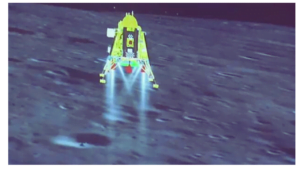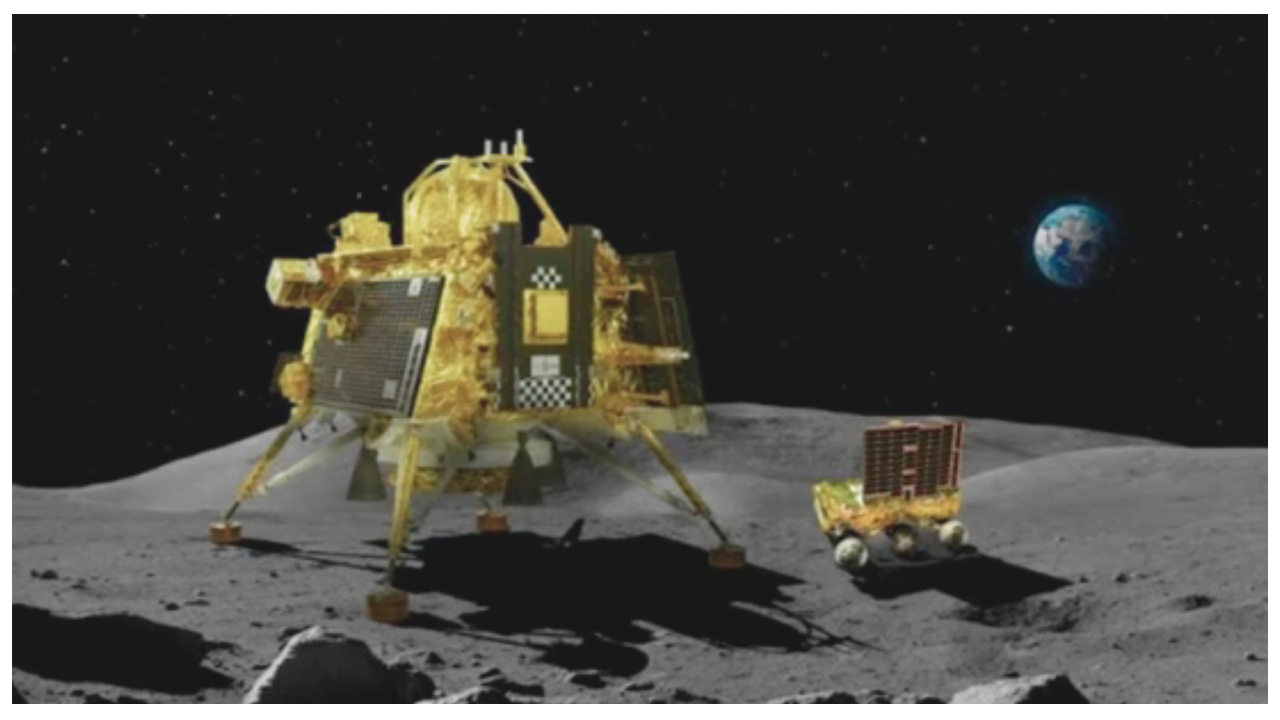India’s Journey to Lunar Exploration-Chandrayaan-3
According to ISRO scientists, the Chandrayaan-3 lunar spacecraft is prepared for a much-anticipated soft touchdown on the Chandrama region of the moon. However, if the lander module’s health parameters are discovered to be “abnormal,” the space agency may postpone the landing until August 27, a senior official has said.
At 6:04 PM, ISRO has scheduled the gentle landing of the Chandrayaan-3 spacecraft. On August 23, the ISRO Space Applications Center provided confirmation.
The lunar mission was launched from Sriharikota on July 14 at 2:35 PM.
The spacecraft’s speed above the surface of the moon will be reduced, according to Neilesh Desai, Director of ISRO’s Space Applications Centre.
On August 23,
The lander will make an attempt to touch down on the moon’s surface from a height of 30 km. At that time, its speed will be 1.68 km/s. Because the moon’s gravitational pull will also be a factor, our attention will be on slowing that speed down, he said at a PTI briefing.
“A crash landing is a possibility if we can’t control that speed,” he continued. We will postpone the landing until August 27 if any lander module health metrics are discovered to be out of the ordinary on August 23.
Desai expressed his hope that the lander module would be successfully landed on the moon’s surface in response to a query.
According to Indian Standard Time, the landing will start at 06:04 PM. A few hours beforehand, we will upload the command. We’ll examine telemetry data and evaluate the moon’s conditions. The deadline will be extended until August 27 if any health parameters are discovered to be inaccurate, and on August 27 if everything is in order, we will try again.
The last 17 minutes of the lander module’s descent are “very crucial,” he said, and “when we start descending, the four-thruster thrust will be fired, reducing its speed.”
According to him, the lander’s speed will be zero when it is 800 meters above the surface of the moon and has both of its engines running. The lander module will gradually drop from 800 meters to 150 meters.

Important information will be gathered and used to choose the landing location on the moon’s surface using sensors mounted on the lander module.
We have sensors that will accurately measure the lander’s speed and separation from the moon’s surface, the scientist stated.
“A strategy (for a secure landing on the lunar surface) has been devised taking into account numerous possibilities. On August 23, at a latitude of 70 degrees, we intend to make a secure landing on the southern pole of the moon.
He replied, “Many improvements have been made this time,” in response to another question. The hardware system is now more robust. We’ll be successful at a soft landing.
He stated that if the mission is delayed until August 27, “We have chosen another landing site that is 400 km away from the main landing site.”
For more: News
Desai commented on the incident involving Russia’s Luna-25 mission, which had a lunar accident, and claimed that Moscow had much resources but they had no success.
“They were attempting to reach the moon’s southern pole. Being disappointed given the mission’s failure is normal. To make the Chandrayaan-3 mission successful, the ISRO has been working for the past four years, he said.
“The previous Chandrayaan-2 mission failed during soft landing,” Desai said. We have grown from our errors. This time, we’ve added new sensors and made a number of improvements.
At various ISRO locations, he claimed, scientists have carried out numerous regional tests and trials.
“This time, we have confidence. We aspire to be successful. Good thoughts from the public are with us, he remarked.
The lunar spacecraft’s mission is on time and going without a hitch, according to earlier in the day statements from ISRO.
The mission is on schedule, according to ISRO. There are ongoing routine system checkups. The flight is going without a hitch.
India will join the elite group of nations that have successfully reached the moon’s surface along with the United States, the former Soviet Union, and China after the Chandrayaan-3 lander module makes a soft landing.
